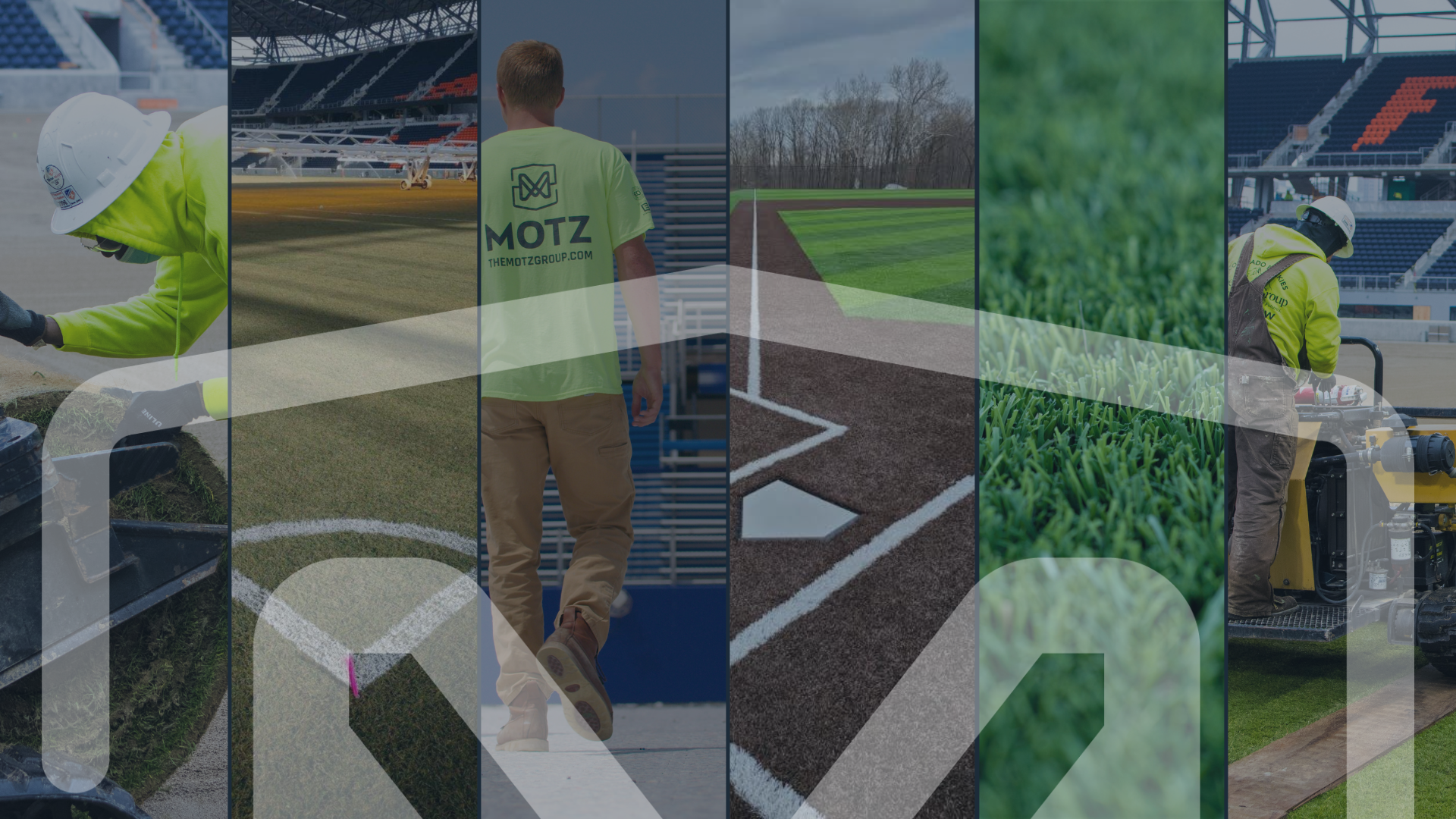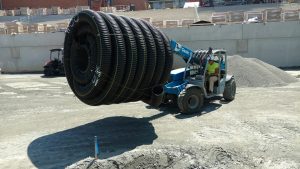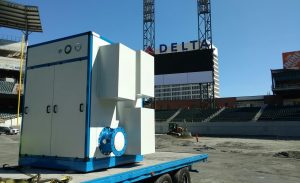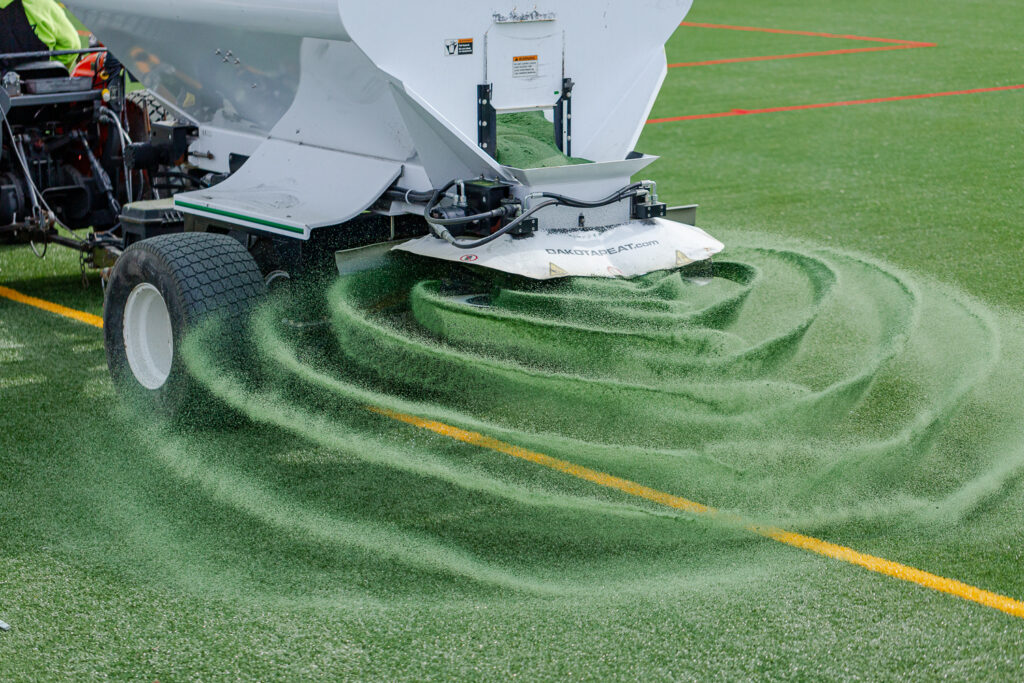
Sports Field Blog
Subscribe To Email Updates
Subscribe to our weekly newsletter and we’ll send updates straight to your inbox
What are the Benefits of a Rootzone Management System?

Two essential ingredients for healthy turfgrass growth are oxygen and water, along, of course, with plant nutrients. Being able to measure each of these in the rootzone, in real time, gives the grounds manager valuable insight for making sound decisions. Having a rootzone management system present with your field can bring you peace of mind and keep your field performing at its best. What other benefits can technology like this bring your team?
5 Benefits of a Rootzone Management System for a Natural Grass Field
1. MONITORS THE ENVIRONMENT OF THE ROOTZONE
Sensors that precisely measure soil water and oxygen levels in the rootzone are available commercially. Moisture levels are measured as the amount of water in the soil profile, typically referred to as Volumetric Water Content, and reported as a percentage of total soil moisture. Capacitance and TDR probes are the most common tools for measuring soil moisture. Although an “ideal” soil moisture level probably does not exist, values in the 14% to 18% are commonly cited for sand based rootzones.
Oxygen sensors measure the level of gaseous O2 in the soil. Oxygen makes up 21% of the total “air” molecules, so the highest reading an O2 sensor can yield is 21%. Lower readings occur when there are barriers present that slow the movement of atmospheric oxygen into soil pore spaces, such as surface saturation, soil compaction, dense organic layers, etc. When oxygen is depleted, soil pore spaces fill with gases that displace O2, such as CO2, ethylene, acetic acid and other gases toxic to roots. Maintaining healthy O2 soil levels is critical to healthy grass growth.
When data on soil moisture and oxygen levels is captured together in a datalogger, the information can be translated and then displayed graphically for the grounds manager’s use. Charting these values over time provides the grounds manager with the ability to correlate agronomic practices with resultant rootzone conditions.
2. OFFERS OVERHEAD AND SUBIRRIGATION
Virtually all high performance natural grass fields include an overhead irrigation system. The measure of how uniformly water is applied over an entire field by an irrigation system is called Distribution Uniformity (DU). Really good overhead systems can have a DU that approaches 80%, but most systems are far less efficient than that. It is not uncommon for overhead irrigation systems to have DUs less than 50%. Several factors contribute, including poor design, misadjusted or malfunctioning heads and windy conditions.
Adding the ability to efficiently subirrigate a sports field provides the grounds manager with greater flexibility in delivering water to the plants. This can be a particularly effective strategy when field use is extensive and the chances to run the overhead irrigation are limited. Sports stadiums that are more and more frequently used as entertainment venues often must go without overhead irrigation for five or more days in a row. Sustaining soil moisture levels with water supplied from below the surface can make a grounds manager’s job a little less stressful.
3. ALLOWS FOR POSITIVE AND NEGATIVE AIR FLOW THROUGH THE ROOTZONE
Oxygen makes up 21% of the composition of “air” and its concentration in the soil air environment has a direct effect on water and nutrient uptake, respiration rates and macro- and microorganism activities. Oxygen moves through the soil by diffusion, and the rate at which diffusion occurs is affected by such things as soil structure and texture, compaction, soil moisture levels and organic matter concentrations.
When soil air diffusion is slowed, gases toxic to plants that are produced during biological processes can begin to build up, with a resultant decrease in oxygen levels. These gases include ethylene and acetic acid. Anaerobic decomposition of soil organic matter also occurs with low soil oxygen levels and can produce a condition called “black layer.”
Continuous gas exchange in the soil environment is critical for healthy grass growth. Core aeration is a common practice because it physically opens the soil to promote gas exchange. Mechanically “venting” the soil air environment, by either forcing fresh air up through the rootzone with positive pressure, or pulling it down from above with vacuum pressure can accelerate gas exchange and help optimize soil oxygen levels.
4. DELIVERS GRAVITY AND VACUUM-ENHANCED DRAINAGE

Most sports fields rely on the physics of gravity to drain: as water builds up on the surface or in the rootzone, head pressure is created which moves the water down a slope and/or pushes the water down through the growing medium. The rate at which water can move vertically through the rootzone depends primarily on the surface cover and soil structure and texture. Soils with lots of pore space, such as high sand rootzone mixes, will have greater infiltration rates than those with elevated silt and clay content.
In high performance natural grass sports fields, drainage is king. Modern field design and improved turf management techniques provide for acceptable drainage rates under most conditions. But even high performing fields can be overrun during short burst deluges or extended heavy rains. When this happens right before or during a game, significant delays, or even rain-outs, can occur.
Field designs that include vacuum-enhanced drainage up the ante by creating negative (vacuum) pressure on the drainage matrix and mechanically pulling water through the system at a rate that surpasses the forces of gravity. This feature offers the grounds manager the best chance to keep the field in play, regardless of what curve ball nature may throw.
5. PROVIDES ABILITY TO CAPTURE, CONSERVE, AND RECYCLE WATER
In a standard sports field design based on the USGA principle of a perched water table, water in the rootzone drains freely into the drainage system. At field capacity, when all gravitational water has drained away, a small reserve of water in held at the interface of the rootzone sand and underlying gravel raft. The grounds manager has little control over the rate at which the field drains (other than cultural practices) and must recharge soil moisture levels with overhead irrigation, or with the help of Mother Nature. Water that enters the drain pipes can be captured for reuse, but a percentage of that water is lost into the subsoils. The amount of water lost depends on characteristics of the subsoil and intensity of the drainage matrix.
When a field is built within a water-tight barrier, it changes the rules of the game. Because the barrier separates the rootzone from the subsoils, all of the water that falls on the field and moves down through the rootzone is contained within the field profile. Having control of the fate of all that water affords the facility complete flexibility in their water management strategies.
When the discharge outlet is properly valved, a central controller can manipulate drainage functions based on real-time data collected from the soil moisture sensors. Fully opened, the field drains as a typical gravity system. As soil moisture levels fall, the controller slows drainage to conserve water in the system. When the valve is fully closed, water is held on the floor of the field to act as a reservoir for sub-surface irrigation. Water recycling is also fully supported because up to 100% of the water leaving the system can be diverted to a cistern for reuse.
If you have questions regarding a rootzone management system, or would like to learn more about The Motz Group’s AirPAT™ system, contact us below to chat with one of our natural grass experts.
Similar Blogs



